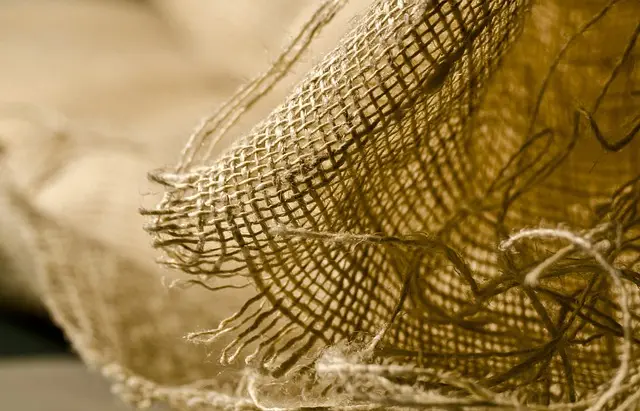Muscle soreness, often resulting from muscle fibers' microtears and inflammation, is a common issue post-intense physical activity or injury. Kratom, a plant-based substance with analgesic properties due to its alkaloids like mitragynine and 7-hydroxymitragynine, has been used for pain relief. When combined with kava root powder preparation, sourced from the Piper methysticum plant, which is known for its analgesic and calming effects from compounds called kavalactones, it offers a holistic approach to managing muscle soreness by addressing both physical discomfort and psychological stress. This combination should be used with caution, considering its potency and potential health risks with prolonged or excessive use, and within the legal frameworks and in light of individual health considerations. The kava root powder preparation is particularly important for efficacy; it involves a careful process of selecting high-quality roots, soaking them to enhance compound extraction, and grinding into a fine powder, either traditionally with stone grinders or using mechanical means, before being dissolved in water to produce an infusion. Safe use includes adhering to recommended dosages and consulting healthcare professionals, especially for those with existing health issues or taking other medications. This natural remedy is a valuable alternative to conventional pain relief, but always within the context of responsible consumption and as part of a broader health strategy.
Muscle soreness can be a significant hindrance to an active lifestyle, often leaving individuals seeking effective remedies. This article explores the intersection of muscle recovery and natural supplements, with a focus on kratom and its traditional counterpart, kava root powder. Known for its historical use in pain management, kava offers a complementary approach when combined with kratom, another natural substance gaining attention for its analgesic properties. We will delve into the preparation of kava root powder—a key step in harnessing its potential benefits—and examine how integrating it with kratom can enhance muscle soreness relief. Join us as we navigate this traditional and emerging solution to common muscular aches and pains.
- Understanding Muscle Soreness and Kratom's Role in Relief
- Preparing Kava Root Powder: A Traditional Approach to Pain Alleviation
- Integrating Kratom with Kava for Enhanced Muscle Soreness Relief
Understanding Muscle Soreness and Kratom's Role in Relief

Muscle soreness, often a result of intense physical activity or injury, can significantly hinder an individual’s recovery and performance. It arises from microtears in muscle fibers that occur during exercise, leading to inflammation and discomfort. Understanding the root cause of muscle soreness is crucial for devising effective relief strategies. Kratom, a tropical evergreen tree native to Southeast Asia, has garnered attention for its potential role in alleviating muscle pain. Its leaves contain various alkaloids, with mitragynine and 7-hydroxymitragynine being the most abundant, which may interact with the body’s opioid receptors to provide analgesic effects.
For those seeking natural supplementation for muscle soreness relief, kava root powder preparation is often considered alongside kratom. Kava, a Piper methysticum extract, has been traditionally used in cultural ceremonies within its native regions for its calming and pain-relieving properties. When prepared correctly, kava can synergize with kratom to offer a comprehensive approach to managing muscle soreness. The combination of these two natural substances may offer a balanced effect that addresses both the pain and the psychological stress associated with recovery. It is important to use these supplements responsibly and in accordance with expert guidelines, as both kava and kratom can have potent effects and carry certain health considerations when used regularly or in high doses.
Preparing Kava Root Powder: A Traditional Approach to Pain Alleviation

Kava root powder, a traditional remedy from the South Pacific, has been used for centuries to alleviate pain and promote relaxation. The preparation of kava root powder is a meticulous process that honors the cultural significance and efficacy of this natural substance. To begin, the fresh roots of the Piper methysticum plant are carefully selected from cultivated lands, ensuring they are of high quality and potency. The roots are then peeled, chopped into manageable pieces, and placed in a container with water to soak for several hours or overnight, which facilitates the extraction of the desirable kavalactones—compounds believed to contribute to its pain-relieving properties.
After the soaking period, the kava roots undergo a grinding process to transform them into a fine powder. Traditionally, this was done by hand using a stone grinder, but modern methods often employ mechanical mills. The resulting kava root powder is then ready for consumption, typically mixed with water to create an infusion. This traditional approach to pain alleviation remains relevant today, as many continue to rely on kava root powder as a natural means of addressing muscle soreness. When integrating kava into a wellness routine for muscle relief, it’s important to adhere to the recommended dosage and consult with healthcare professionals to ensure safety and compatibility with any existing health conditions or medications.
Integrating Kratom with Kava for Enhanced Muscle Soreness Relief

When exploring natural remedies for muscle soreness, the combination of Kratom and Kava presents a compelling alternative to traditional pain relief methods. Both substances are revered for their analgesic properties, which can synergize to provide enhanced relief. Kava root powder, particularly when prepared correctly, is renowned for its relaxing and soothing effects on the body and mind. Its active compounds, known as kavalactones, work in tandem with Kratom’s alkaloids, such as mitragynine and 7-hydroxymitragynine, to target the discomfort associated with muscle soreness. The preparation of Kava root powder is a ritual in itself; it involves grinding the roots into a fine powder and then mixing it with water to produce a beverage. This preparation method ensures that the active ingredients are properly extracted for maximum efficacy. When integrating Kava with Kratom, users often report a heightened sense of relaxation and pain relief, which can be particularly beneficial post-exercise or for those suffering from chronic pain conditions. It’s important to approach the use of these supplements with caution, adhering to recommended dosages to avoid adverse effects and ensuring that they are used responsibly as part of a holistic health regimen.
Muscle soreness can be a persistent and uncomfortable companion, particularly for those who engage in physically demanding activities. The article has explored various aspects of muscle soreness and the potential relief that kratom supplements may offer, alongside the traditional use of kava root powder. By understanding how these substances interact with the body’s pain response, individuals can make informed decisions about their muscle soreness management strategies. Preparing kava root powder is a traditional method steeped in cultural significance and, when integrated with kratom, may provide enhanced relief. It is crucial to approach such supplementation with caution, adhering to safe dosage guidelines and consulting healthcare professionals. With a comprehensive grasp of these remedies, one can better navigate the path to alleviating muscle soreness naturally.






